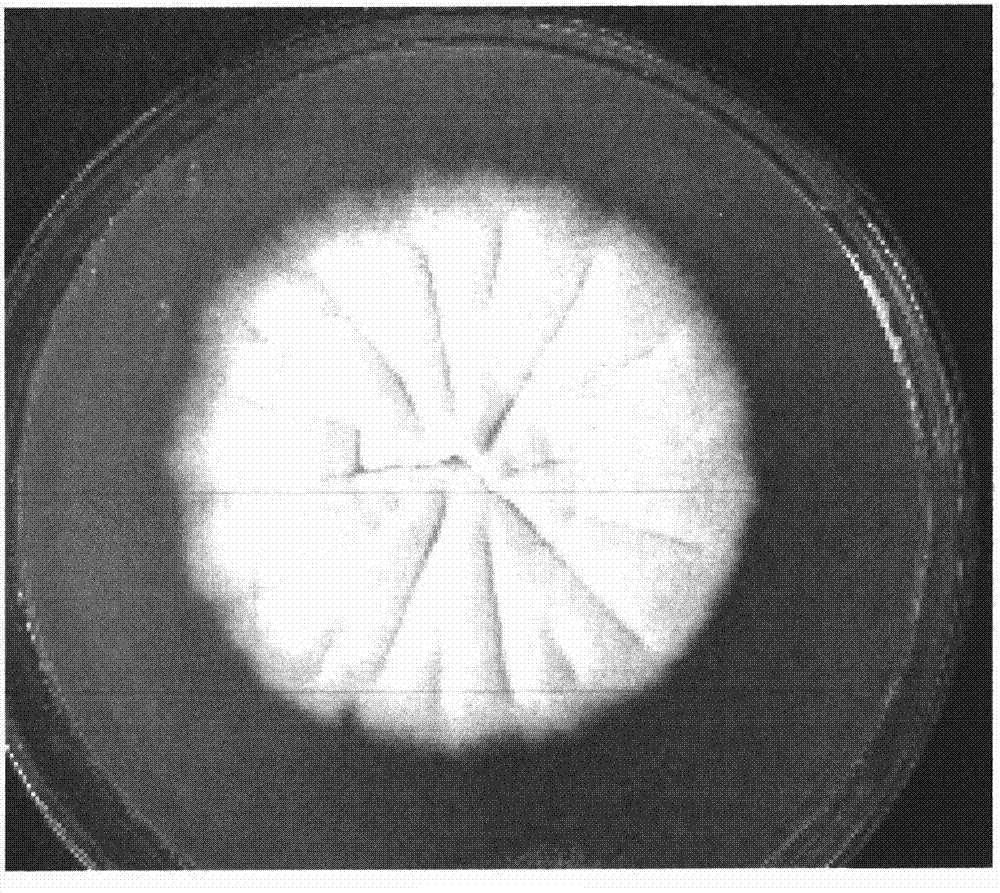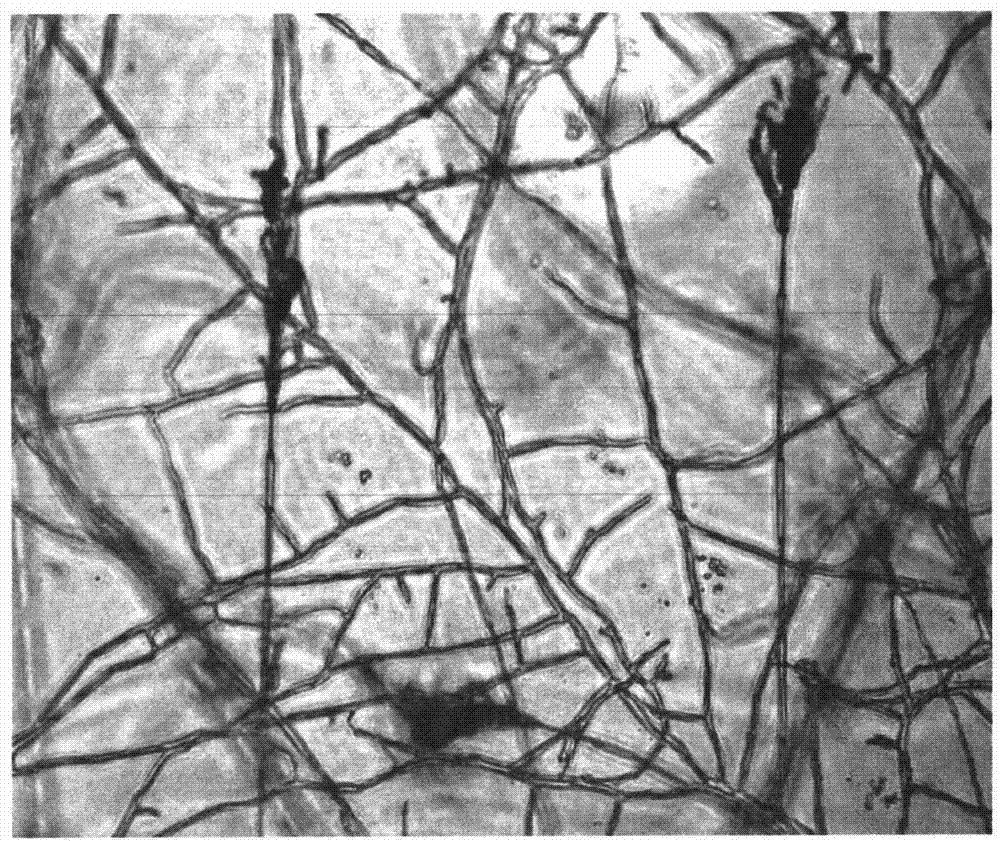Identification identification and application of heavy metal tolerant penicillium in coal gangue
A heavy metal and Penicillium technology, applied in fungi, microorganism-based methods, and the restoration of polluted soil, etc., can solve the problem of microorganisms unable to reproduce, and achieve the effect of strong resistance to heavy metal cadmium and strong tolerance.
- Summary
- Abstract
- Description
- Claims
- Application Information
AI Technical Summary
Problems solved by technology
Method used
Image
Examples
Embodiment 1
[0014] Embodiment 1: the separation of Penicillium of the present invention.
[0015] 12 samples were randomly selected from the Xiejiaji coal mining area in Huainan to form a representative sample for enrichment and screening. Add 5g gangue sample into 45mL Martin's liquid medium, enrich and cultivate for 48 hours at 28°C and 180r / min, then take 2mL of enriched bacteria liquid and inoculate it with 100mg / L Cd 2+ cultured in the fresh medium of 200mg / L Cd 2+ cultured in liquid medium, and so on, increasing Cd step by step 2+ Concentration, at 300-5000mg / L Cd 2+ cultured in culture medium. Take 0.2mL1000mg / L Cd 2+ The bacterial solution was coated in 5000mg / L Cd 2+ Inverted on the solid medium of 28 ° C incubator for 120 h to isolate Cd-resistant strains. According to the preliminary observation of the colony morphology, the BJKD4 monoclonal strain was mold, and it was inoculated to 500~3500mg / L Cd 2+ The bacteria were domesticated and cultured in Chapeauer's medium, and...
Embodiment 2
[0019] Embodiment 2: 18S rDNA sequence determination of Penicillium BJKD4 bacterial strain of the present invention
[0020] 18S rDNA sequence analysis of the strain: the genome was extracted by CTAB (cetyltrimethylammonium bromide) method. DNA was amplified by polymerase chain reaction (PCR) using amplification primers: SSU817TTA GCA TGG AAT AAT RRAATA GGA and SSU1536AAT GCAATG CYC TAT CCC CA. The 50μL reaction system contains: 5μL of 10*PCR buffer, 0.25L of 10mmol / L Dntp, 0.5μL of 45pmol / μL primer, 0.5μL of 2.5U / μL Taq enzyme, 1μL of DNA template and 42.25μL of sterilized deionized water. PCR reaction conditions: denaturation at 94°C for 1 min, annealing at 50°C for 30 s, extension at 72°C for 90 s, 40 cycles, and final extension at 72°C for 5 min. 2 μL of the PCR reaction product was electrophoresed on 1% agarose gel. The DNA sequence was determined by Beijing Huada Gene Company, using BLAST ( http: / / www.ncbi.nlm.nih.gov / BLAST ) program for DNA sequence alignment.
[0...
Embodiment 3
[0022] Embodiment 3: the determination of the ability of penicillium of the present invention to resist heavy metals
[0023] 1. Tolerance of BJKD4 bacterial strains to heavy metal cadmium: inoculate the bacterial strains activated for 2 days into 0, 1, 3, 9, 18 or 36mmol / LCd 2+ In the solid Chapeau medium, cultured at 28°C for 16 days, and measured the colony diameter on the 3rd day.
[0024] The test results showed that the BJKD4 strain contained 0-36mmol / L Cd 2+ Grow in the Chapei solid medium for 16 days, the colony diameter increases with the prolongation of the culture days, and with the Cd 2+ decrease with increasing concentration ( Figure 4 ). In no Cd 2+ In the medium (control), the lag phase of bacterial colony growth is 0-4d, the logarithmic growth phase is 4-15d, and enters the stable phase at 16d; while adding heavy metal Cd 2+ (1-36mmol / L), the lag phase extends to the 6th day, and then enters the logarithmic phase, and reaches a stable phase at 14-15d. Co...
PUM
 Login to View More
Login to View More Abstract
Description
Claims
Application Information
 Login to View More
Login to View More - R&D
- Intellectual Property
- Life Sciences
- Materials
- Tech Scout
- Unparalleled Data Quality
- Higher Quality Content
- 60% Fewer Hallucinations
Browse by: Latest US Patents, China's latest patents, Technical Efficacy Thesaurus, Application Domain, Technology Topic, Popular Technical Reports.
© 2025 PatSnap. All rights reserved.Legal|Privacy policy|Modern Slavery Act Transparency Statement|Sitemap|About US| Contact US: help@patsnap.com



